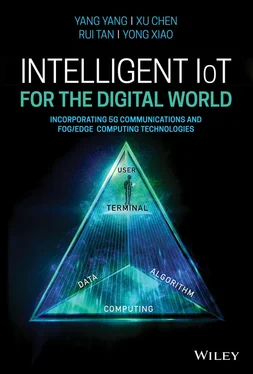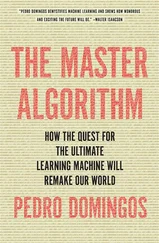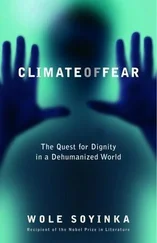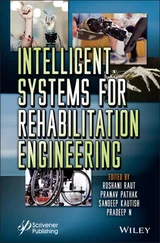Yang Yang - Intelligent IoT for the Digital World
Здесь есть возможность читать онлайн «Yang Yang - Intelligent IoT for the Digital World» — ознакомительный отрывок электронной книги совершенно бесплатно, а после прочтения отрывка купить полную версию. В некоторых случаях можно слушать аудио, скачать через торрент в формате fb2 и присутствует краткое содержание. Жанр: unrecognised, на английском языке. Описание произведения, (предисловие) а так же отзывы посетителей доступны на портале библиотеки ЛибКат.
- Название:Intelligent IoT for the Digital World
- Автор:
- Жанр:
- Год:неизвестен
- ISBN:нет данных
- Рейтинг книги:3 / 5. Голосов: 1
-
Избранное:Добавить в избранное
- Отзывы:
-
Ваша оценка:
- 60
- 1
- 2
- 3
- 4
- 5
Intelligent IoT for the Digital World: краткое содержание, описание и аннотация
Предлагаем к чтению аннотацию, описание, краткое содержание или предисловие (зависит от того, что написал сам автор книги «Intelligent IoT for the Digital World»). Если вы не нашли необходимую информацию о книге — напишите в комментариях, мы постараемся отыскать её.
Provides information on what IoT/WoT is, when to use it, how to provide IoT services with certain technologies, and more Discusses restful architecture, main protocols (ZigBee, 6lowpan, CoAP, HTML5) Explores key technologies on different layers (sensing, gathering, application) Examines how IoT will change the information and communication technology industry Written for professionals working in IoT development, management and big data analytics,
offers an overview of IoT architecture, key technology, current applications and future development of the technology.
Intelligent IoT for the Digital World — читать онлайн ознакомительный отрывок
Ниже представлен текст книги, разбитый по страницам. Система сохранения места последней прочитанной страницы, позволяет с удобством читать онлайн бесплатно книгу «Intelligent IoT for the Digital World», без необходимости каждый раз заново искать на чём Вы остановились. Поставьте закладку, и сможете в любой момент перейти на страницу, на которой закончили чтение.
Интервал:
Закладка:
Based on the above analyses, we believe a pyramid model could best describe the fundamental relationships between these three elements, i.e. data (as raw material), computing (as hardware resource) and algorithms (as software resource) jointly constitute the triangular base to support a variety of user‐centric intelligent IoT services at the spire by using different kinds of smart terminals or devices. This book aims at giving a state‐of‐the‐art review of intelligent IoT technologies and applications, as well as the key challenges and opportunities facing the digital world. In particular, from the perspectives of network operators, service providers and typical users, this book tries to answer the following five critical questions.
1 What is the most feasible network architecture to effectively provide sufficient resources anywhere at any time for intelligent IoT application scenarios?
2 How can we efficiently discover, allocate and manage computing, communication and caching resources in heterogeneous networks across multiple domains and operators?
3 How do we agilely achieve adaptive service orchestration and reliable service provisioning to meet dynamic user requirements in real‐time?
4 How do we effectively protect data privacy in IoT applications, where IoT devices and edge/fog computing nodes only have limited resources and capabilities?
5 How do we continuously guarantee and maintain the synchronization and reliability of wide‐area IoT systems and applications?
Specifically, Chapter 1reviews the traditional IoT system architecture, some well‐known IoT technologies and standards, which are leveraged to improve the perception of the physical world, as well as the efficiency of data collection, transmission and analysis. Further, a pyramid model concentrated on user data, distributed algorithms and computing resources is proposed and discussed. This model is based on the multi‐tier computing network architecture and applies a data‐driven approach to coordinate and allocate most feasible resources and algorithms inside the network for effective processing of user‐centric data in real‐time, thus supporting various intelligent IoT applications and services, such as information extraction, pattern recognition, decision making, behavior analysis and prediction. As 5G communication networks and edge/fog/cloud computing technologies are getting more and more popular in different industrial sectors and business domains, a series of new requirements and key challenges should be carefully addressed for providing more sophisticated, data‐driven and intelligent IoT services with usable resources and AI algorithms in different application scenarios. For instance, in a smart factory, 4G/5G mobile communication networks and wireless terminals are ubiquitous and always connected. A large variety of industrial IoT devices are continuously monitoring the working environment and machines, and generating massive data on temperature, humidity, pressure, state, position, movement, etc. This huge amount of data needs to be quickly analyzed and accurately comprehended with domain‐specific knowledge and experiences. To satisfy the stringent requirements on end‐to‐end service delay, data security, user privacy, as well as accuracy and timeliness in decision making and operation control, the proposed new model and architecture are able to fully utilize dispersive computing resources and intelligent algorithms in the neighborhood for effectively processing massive cross‐domain data, which is collected and shared through intensive but reliable local communications between devices, machines and distributed edge/fog nodes.
Chapter 2presents the multi‐tier computing network architecture for intelligent IoT applications, which comprises not only computing, communication and caching (3C) resources but also a variety of embedded AI algorithms along the cloud‐to‐things continuum. This architecture advocates active collaborations between cloud, fog and edge computing technologies for intelligent and efficient data processing at different levels and locations. It is strongly underpinned by two important frameworks, i.e. Cost Aware Task Scheduling (CATS) and Fog as a Service Technology (FA 2ST). Specifically, CATS is an effective resource sharing framework that utilizes a practical incentive mechanism to motivate efficient collaboration and task scheduling across heterogeneous resources at multiple devices, edge/fog nodes and the cloud, which are probably owned by different individuals and operators. While FA 2ST is a flexible service provisioning framework that is able to discover, orchestrate, and manage micro‐services and cross‐layer 3C resources at any time, anywhere close to end users, thus guaranteeing high‐quality services under dynamic network conditions. Further, two intelligent application scenarios and the corresponding technical solutions are described in detail. Firstly, based on edge computing, an on‐site cooperative Deep Neural Network (DNN) inference framework is proposed to execute DNN inference tasks with low latency and high accuracy for industrial IoT applications, thus meeting the strict requirements on service delay and reliability. Secondly, based on fog computing, a three‐tier collaborative computing and service framework is proposed to support dynamic task offloading and service composition in Simultaneous Localization and Mapping (SLAM) for a robot swarm system, which requires timely data sharing and joint processing among multiple moving robots. Both cases are implemented and evaluated in real experiments, and a set of performance metrics demonstrates the effectiveness of the proposed multi‐tier computing network and service architecture in supporting intelligence IoT applications in stationary and mobile scenarios.
Under this architecture, Chapter 3investigates cross‐domain resources management and adaptive allocation methods for dynamic task scheduling to meet different application requirements and performance metrics. Specifically, considering a general system model with Multiple Tasks and Multiple Helpers (MTMH), the game theory based analytical frameworks for non‐splittable and splittable tasks are derived to study the overall delay performance under dynamic computing and communication (2C) resources. The existence of a Nash equilibrium for both cases is proven. Two distributed task scheduling algorithms are developed for maximizing the utilization of nearby 2C resources, thus minimizing the overall service delay and maximizing the number of beneficial nodes through device/node collaborations. Further, by taking storage or caching into consideration, a fog‐enabled 3C resource sharing framework is proposed for energy‐critical IoT data processing applications. An energy cost minimization problem under 3C constraints is formulated and an efficient 3C resources management algorithm is then developed by using an iterative task team formation mechanism. This algorithm can greatly reduce energy consumption and converge to a stable system point via utility improving iterations. In addition, based on the fundamental trade‐off relationship between service delay and energy consumption in IoT devices/nodes, an offload forwarding mechanism is developed to promote collaborations of distributed fog/edge nodes with different computing and energy resources. The optimal trade‐off is achieved through a distributed optimization framework, without disclosing any node's private information, nor lengthy back‐and‐forth negotiations among collaborative nodes. The proposed mechanism and framework are evaluated via an extensive simulation of a fog‐enabled self‐driving bus system in Dublin, Ireland, and demonstrate very good performance in balancing energy consumption among multiple nodes and reducing service delay in urban mobile scenarios.
After 3C and energy resources are properly managed, Chapter 4concentrates on dynamic service provisioning in multi‐tier computing networks. Firstly, at the network edge, an online orchestration framework is proposed for cross‐edge service function chaining to maximize the holistic cost‐efficiency through joint optimization of resource utilization and traffic routing. By carefully combining an online optimization technique with an approximate optimization method, this framework runs on top of geographically dispersed edge/fog nodes to tackle the long‐term cost minimization problem with future uncertain information. In this way, the benefits of service function chaining are fully unleashed for configuring and providing various intelligent services in an agile, flexible, and cost‐efficient manner. Secondly, inside a computing network using renewable energy, a network slicing framework for dynamic resource allocation and service provisioning is proposed, where a regional orchestrator timely coordinates workload distribution among multiple edge/fog nodes, and provides necessary slices of energy and computing resources to support specific IoT applications with Quality of Service (QoS) guarantees. Based on game theory and the Markov decision process, an effective algorithm is developed to optimally satisfy dynamic service requirements with available energy and network resources under randomly fluctuating energy harvesting and workload arrival processes. Thirdly, across multiple networks, a multi‐operator network sharing framework is proposed to enable efficient collaborations between resource‐limited network operators in supporting a variety of IoT applications and high‐speed cellular services simultaneously. This framework is based on the Third Generation Partnership Project (3GPP) Radio Access Network (RAN) sharing architecture, and can significantly improve the utilization of network resources, thus effectively reducing the overall operational costs of multiple networks. Both the network slicing and multi‐network sharing frameworks are evaluated by using more than 200 base station (BS) location data from two mobile operators in the city of Dublin, Ireland. Numerical results show they can greatly improve the workload processing capability and almost double the total number of connected IoT devices and applications.
Читать дальшеИнтервал:
Закладка:
Похожие книги на «Intelligent IoT for the Digital World»
Представляем Вашему вниманию похожие книги на «Intelligent IoT for the Digital World» списком для выбора. Мы отобрали схожую по названию и смыслу литературу в надежде предоставить читателям больше вариантов отыскать новые, интересные, ещё непрочитанные произведения.
Обсуждение, отзывы о книге «Intelligent IoT for the Digital World» и просто собственные мнения читателей. Оставьте ваши комментарии, напишите, что Вы думаете о произведении, его смысле или главных героях. Укажите что конкретно понравилось, а что нет, и почему Вы так считаете.












